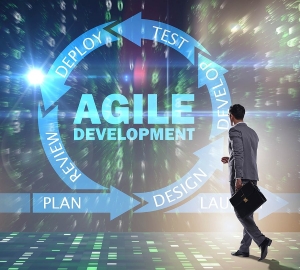 Agile is not a technology but rather an approach. As such, the barriers to adoption are not technical, they are cultural. Moving to Agile requires a complete shift in thinking from waterfall development. No longer is it feasible to set requirements at the beginning of the project and then design to those specifications, not launching until the whole system is complete. Rather, Agile works more in line with the pace of today, emphasizing constant communication to introduce change into the development process and encouraging small elements of the end solution to be released throughout the project lifecycle. Use of Agile in government has come a long way, but there is still room for improvement in how agencies meet digital goals and expectations. Continue reading
Agile is not a technology but rather an approach. As such, the barriers to adoption are not technical, they are cultural. Moving to Agile requires a complete shift in thinking from waterfall development. No longer is it feasible to set requirements at the beginning of the project and then design to those specifications, not launching until the whole system is complete. Rather, Agile works more in line with the pace of today, emphasizing constant communication to introduce change into the development process and encouraging small elements of the end solution to be released throughout the project lifecycle. Use of Agile in government has come a long way, but there is still room for improvement in how agencies meet digital goals and expectations. Continue reading

 ce 2004, The Cybersecurity and Infrastructure Security Agency (CISA) and the National Cybersecurity Alliance (NCA) have led a collaborative effort (at the direction of the President and Congress) to raise cybersecurity awareness nationally and internationally. Marking October as
ce 2004, The Cybersecurity and Infrastructure Security Agency (CISA) and the National Cybersecurity Alliance (NCA) have led a collaborative effort (at the direction of the President and Congress) to raise cybersecurity awareness nationally and internationally. Marking October as  The term "software factories" conjures up images of pristinely clean technology assembly lines with super-efficient singularly focused line workers. In reality, a software factory is not a place, but rather a process for improving the speed of software development and release. A software factory provides a repeatable,
The term "software factories" conjures up images of pristinely clean technology assembly lines with super-efficient singularly focused line workers. In reality, a software factory is not a place, but rather a process for improving the speed of software development and release. A software factory provides a repeatable,  The government's relationship with cloud computing has been an evolving affair. Initially, there was skepticism that cloud solutions could not provide the needed security that on-premise systems had been providing. With checks and balances provided by FedRAMP, security concerns were slowly but surely overcome. With the move to more remote work and the demand for digital interaction with citizens, cloud has moved from a novel approach to a necessary part of the Federal IT infrastructure.
The government's relationship with cloud computing has been an evolving affair. Initially, there was skepticism that cloud solutions could not provide the needed security that on-premise systems had been providing. With checks and balances provided by FedRAMP, security concerns were slowly but surely overcome. With the move to more remote work and the demand for digital interaction with citizens, cloud has moved from a novel approach to a necessary part of the Federal IT infrastructure. The
The 
